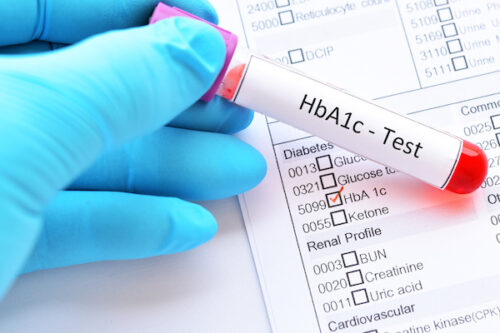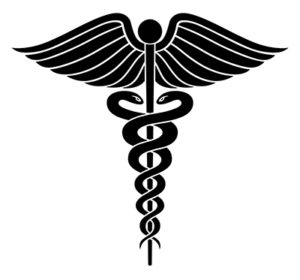American Cancer Society Reverses Its Strong Position on Mammograms and PSA Testing
The American Cancer Society Reverses Its Strong Position on Mammograms and PSA Testing
Dr. Otis Brawley, chief medical officer of the American Cancer Society told the New York Times on Wednesday, October 21, 2009 , “We don’t want people to panic, but I’m admitting that American medicine has overpromised when it comes to screening. The advantages to screening have been exaggerated.” 1
 How does your personal physician communicate confidence and comfort to you now? “I am sorry I recommended a mammogram that resulted in an unnecessary amputation of your breast?” How consoling do these words feel, “It is a shame you haven’t had an erection in the past 10 years due to the PSA test I insisted you get, that led to debilitating prostate treatments—I hope you and your wife understand I was just following orders from the American Cancer Society?” Tens of millions of women and men have been irreparably damaged by the universal and enthusiastic recommendations for “early detection programs,” also known as “screening,” from their personal physicians, neighborhood breast and prostate clinics, community hospitals, national medical associations and medical societies over the past four decades. Now, all that the faithful patients get is a timid apology from the American Cancer Society, evoked by an article in the October 21, 2009 issue of Journal of the American Medical Association, titled “Rethinking Screening for Breast Cancer and Prostate Cancer.” 2
How does your personal physician communicate confidence and comfort to you now? “I am sorry I recommended a mammogram that resulted in an unnecessary amputation of your breast?” How consoling do these words feel, “It is a shame you haven’t had an erection in the past 10 years due to the PSA test I insisted you get, that led to debilitating prostate treatments—I hope you and your wife understand I was just following orders from the American Cancer Society?” Tens of millions of women and men have been irreparably damaged by the universal and enthusiastic recommendations for “early detection programs,” also known as “screening,” from their personal physicians, neighborhood breast and prostate clinics, community hospitals, national medical associations and medical societies over the past four decades. Now, all that the faithful patients get is a timid apology from the American Cancer Society, evoked by an article in the October 21, 2009 issue of Journal of the American Medical Association, titled “Rethinking Screening for Breast Cancer and Prostate Cancer.” 2
Adequate scientific evidence to stop mass screening programs has been readily available to your personal doctor for more than three decades. A flick of the “on” button of his or her computer, and a ten-minute search at the National Library of Medicine (www.pubmed.gov) would have revealed the truth. In 1976 Pietro M. Gullino presented his findings on the natural history of cancer, showing early detection is really late detection, at the Conference on Breast Cancer: A Report to the Profession, sponsored by the White House, the National Cancer Institute, and the American Cancer Society. 3 He explained: “ If the time required for a tumor to double its diameter during a known period of time is taken as a measure of growth rate, one can calculate by extrapolation that two-thirds of the duration of a breast cancer remains undetectable by the patient or physician. Long before a breast carcinoma can be detected by present technology, metastatic spread may occur and does in most cases.” This report was subsequently published in the journal representing the American Cancer Society (Cancer).
In more familiar words, Dr. Gullino and many other researchers have clearly told everyone listening: mammography, breast self examination, PSA and digital rectal exam are really late detection methods and cannot be expected to save lives by “catching cancer before it spreads.” Unfortunately, there is no profit in telling this truth. So, 386,560 people in the US are diagnosed annually with breast cancer (194,280) and prostate cancer (192,280); many of them through screening. 2
Cancer Mongering—the Most Successful of All Medical Enterprises
Cancer-screening businesses using two modern technologies—the mammogram and the blood test, prostate specific antigen (PSA)—have captured more customers than all other efforts combined. Campaigns have been so effective that about 75 percent of men have had a routine PSA test and about 70 percent of women older than 40 report they have had a recent mammogram. 2 More than $20 billion is spent annually on screening for these two diseases. 2
There are two customary ways a doctor-patient relationship is established. The traditional means is that you become ill and you seek out the advice of a doctor. In this case you initiate the relationship. The worth of the evidence supporting the doctor’s treatment does not need to be very solid. Your doctor is acting in his or her professional capacity to offer you the best available remedies without any real guarantee of the outcome. Remember, you asked for the help.
The second means of establishing a doctor-patient relationship became common with the introduction of programs looking for “early” cancer (screening). In this scenario the doctor comes looking for you. Life is good—you are enjoying your family, hobbies, and work. Then a knock sounds at your front door by way of a radio, TV, or magazine advertisement. Just as likely, during an office visit for an unrelated issue, such as a virus cold, your doctor admonishes you for failing to have your annual mammogram or PSA test. Through screening programs millions of people have become patients. When the doctor turns unsuspecting men and women into customers then the evidence that the outcome of this campaign will be far “more good than harm” must be unquestionable.
On October 21, 2009 the public was told by the American Cancer Society that this has not been the case for breast and prostate screening. Why now? The evidence has not changed—the only change is that now a few more people are willing to tell the truth. Why the delay? Annually, there is $20 billion at stake for screening alone and hundreds of billions more for the tests and treatments that follow. The ivory towers of your town’s cancer centers have been built from the blood of men and women subjected to harmful screening programs.
How Do They Say, “I’m Sorry?”
No doctor can restore the natural breast of a woman or give back a man’s sexual function. These people will remain the casualties of the war on cancer fought with unjust and ineffective weapons delivered by untruthful medical professionals. Certainly, some of your personal physicians didn’t know, but ignorance is no excuse when the truth is so easily available. In 1997 an article titled, “ On the growth rates of human malignant tumors: implications for medical decision-making.” the authors, Friberg and Mattson concluded, “Most tumors are several years old when detectable by present-day diagnostic methods. This makes the term ‘early detection’ questionable.” 8
Human traits of greed and dishonesty have prevailed. Righteousness and giving are also human traits and now is the time for these two to triumph. $20 billion (the same amount that is currently spent on annual screening for breast and prostate cancer) should now be spent annually doing the right things for saving people from cancer, the unreliable tests, and the harmful treatments. Physicians, screening clinics, hospitals, medical associations, and medical societies must be forced, under the penalty of law if necessary, to tell the truth: Their testing does more harm than good.
Furthermore, they should be made to spread the good news about diet and cancer. Presently the American Cancer Society’s dietary messages for cancer prevention are, for women to “…stay at a healthy weight throughout your life and avoid gaining too much weight,” and “men who eat a lot of red meat or high-fat dairy products appear to have a slightly higher chance of getting prostate cancer. These men also tend to eat fewer fruits and vegetables. Doctors are not sure which of these factors is responsible for raising the risk.”9 These are downright timid messages about the importance of a healthy diet.
The truth is breast and prostate cancer are caused by the rich Western diet full of beef, chicken, cheese, milk, and oils, and contaminated with powerful environmental cancer-causing chemicals. A sizable share of that $20 billion must be spent on advertising, education, and subsidy programs to bring about monumental changes in our eating. The American Cancer Society needs to put meaning behind their apology by enthusiastically spreading the message that a starch-based diet with fruits and vegetables is fundamental for cancer prevention and good health.
References:
1) http://www.sfgate.com/cgi-bin/article.cgi?f=/c/a/2009/10/21/MNNT1A8FDR.DTL&tsp=1
2) Esserman L, Shieh Y, Thompson I. Rethinking screening for breast cancer and prostate cancer. JAMA. 2009 Oct 21;302(15):1685-92.
3) Gullino P. Natural history of breast cancer. Progression from hyperplasia to neoplasia as
predicted by angiogenesis. Cancer. 1977 Jun;39(6 Suppl):2697-703.
http://www3.interscience.wiley.com/cgi-bin/fulltext/112679768/PDFSTART
4) http://www.cancer.org/docroot/MED/content/MED_2_1x_American_Cancer_Society_Names
5) http://www.psa-rising.com/upfront/otisbrawleyfeb00.htm
6) Kramer BS, Brawley OW. Cancer Screening. Hematol Oncol Clin North Am. 2000 Aug;14(4):831-48. Review.
7) Brawley OW. Prostate carcinoma incidence and patient mortality: the effects of screening and early detection. Cancer. 1997 Nov 1;80(9):1857-63. http://www.psa-rising.com/upfront/otisbrawleyfeb00.htm
8) Friberg S, Mattson S. On the growth rates of human malignant tumors: implications for medical decision making. J Surg Oncol. 1997 Aug;65(4):284-97.
9) ACS dietary statements: http://www.cancer.org/docroot/home/index.asp
Recommended Articles

The Truth About Starch (Anti Wheat Belly & Grain Brain)

The Latest Scams from the Diabetic Industry





